Change
This great band are one of the best, but also one of the most
underrated ones in the disco and R&B genres during the first
half of the 80s. They created a catchy, smooth and polished
disco, and later R&B and pop funk sound, with a touch
from heaven. Here is the story about the band that maybe let
them shine a bit longer and perhaps do so for new music listeners
as well, they certainly deserve it!
The background
Guadeloupe born businessman Jacques Fred Petrus and his closest
companion, Italian Mauro Malavasi had been producing their
own music since 1978 under the company name of "Goody
Music Production" (GMP; later replaced by the Little
Macho Music name). With in-house studio creations like Macho
(1978) and Peter Jacques band (1979) they had earned some
attention on both the European and American disco heaven.
Based in Italy with a small publishing office in New York
Petrus/Malavasi were the first Italian music producers, exclusively
using Italian musicians, and most of all Italian producers
that gained any broader success. In that respect they were
true pioneers in Italy and was via their earliest achievements
already eternalized in the history books of music.
Putting
it all together
 Already
in 1979 the work with a new nameless project had started.
The name was
finally decided to be "Change", a perfect name considering
the coming changes of the number of projects in GMP Petrus
decided to keep. The main forces behind Change was the Italian
Davide Romani (left), that had joined GMP in 1977 as
a self-taught bass guitar player, and fellow countryman Paolo
Gianolio on guitar, with a solid classic guitar education
behind him. Romani himself also wants to give a great deal
of credit to another Italian musician, Rudy Trevisi that played
a more important role for Change than most people know. Romani
didn't wrote anything the first years with GMP but got the
greatest chance of his life on this new project after Petrus
had persuaded him to compose some tracks despite the fact
that Romani hadn't composed anything before. It turned out
to be a very lucky strike for both Petrus and Romani. Together
with Malavsi, Gianolio and Garfield they wrote all the tracks
on the debut. Now it was time to find the singers and writers
of the lyrics as the Italians hardly could any English. For
that Petrus looked overseas, towards USA. Soon he found guys
like Wayne Garfield that also (co-)wrote some tracks, Tanyanette
Willoughby for the lyrics and the two main vocalists in Luther
Vandross and Jocelyn Brown. Vandross caught Petrus' attention
after he had heard him singing in a Coco Cola spot. He had
the highly sensitive, emotional and expressive voice Petrus
was looking for. Vandross had earlier been a well-appreciated
background singer for artists like Roberta Flack, David Bowie
and Chic, worked with highly successful and famous commercial
advertisement for radio and television and been singing in
the adult choir in the film "The Wiz" in 1978. He
had even released two rarely heard albums on Cotillion under
the name "Luther" in 1976 and 1977 but both of them,
despite hitting the charts with one single from the debut,
didn't reach any greater interest and soon vanished in the
flood of music. This gig on the first album of Change became
his
Already
in 1979 the work with a new nameless project had started.
The name was
finally decided to be "Change", a perfect name considering
the coming changes of the number of projects in GMP Petrus
decided to keep. The main forces behind Change was the Italian
Davide Romani (left), that had joined GMP in 1977 as
a self-taught bass guitar player, and fellow countryman Paolo
Gianolio on guitar, with a solid classic guitar education
behind him. Romani himself also wants to give a great deal
of credit to another Italian musician, Rudy Trevisi that played
a more important role for Change than most people know. Romani
didn't wrote anything the first years with GMP but got the
greatest chance of his life on this new project after Petrus
had persuaded him to compose some tracks despite the fact
that Romani hadn't composed anything before. It turned out
to be a very lucky strike for both Petrus and Romani. Together
with Malavsi, Gianolio and Garfield they wrote all the tracks
on the debut. Now it was time to find the singers and writers
of the lyrics as the Italians hardly could any English. For
that Petrus looked overseas, towards USA. Soon he found guys
like Wayne Garfield that also (co-)wrote some tracks, Tanyanette
Willoughby for the lyrics and the two main vocalists in Luther
Vandross and Jocelyn Brown. Vandross caught Petrus' attention
after he had heard him singing in a Coco Cola spot. He had
the highly sensitive, emotional and expressive voice Petrus
was looking for. Vandross had earlier been a well-appreciated
background singer for artists like Roberta Flack, David Bowie
and Chic, worked with highly successful and famous commercial
advertisement for radio and television and been singing in
the adult choir in the film "The Wiz" in 1978. He
had even released two rarely heard albums on Cotillion under
the name "Luther" in 1976 and 1977 but both of them,
despite hitting the charts with one single from the debut,
didn't reach any greater interest and soon vanished in the
flood of music. This gig on the first album of Change became
his  big
breakthrough and opened up the road of incredible fame and
commercial success as a (second try) solo artist with the
strong debut "Never to much" in 81 on Epic. With
that release and many others to come Vandross (left)
became one of the biggest soul stars during the 80s and 90s.
Vandross realized his value when negotiating with Petrus and
expressed two demands to him before joining in. He wanted
the have full control of the recording process of his voice
and be able to stop whenever he wanted if he wasn't satisfied
with the recordings and secondly to be credited as the main
vocalist, something Petrus originally didn't plan to do. Both
demands were accepted. This was a bigger catch than anyone
could imagine. Jocelyn Brown on here side had made even deeper
footprints in the sand of music than Vandross. She had earlier
been a member of the obscure disco group "Musique"
and became one of the original members of the later well-known
"Inner life" band in 1979 and scored with them incredible
hits like the remake of the classic hit "Ain't no mountain
high enough" in 1981 and the catchy "I like it like
that" in 1982. Brown certainly did posses valuable experiences
from similar kind of music that Petrus/Malavasi produced and
was like Vandross a perfect pick. She was later married Shaw
and was for a short time credited as a background singer with
that name on albums by Change in 80 and 81. But in 82 she
was divorced and used her old name once again and become under
that name a successful solo star during the 80s. Her solo
career included the tasteful debut in 1984 including the funky
dance hit "Somebody else's guy".
big
breakthrough and opened up the road of incredible fame and
commercial success as a (second try) solo artist with the
strong debut "Never to much" in 81 on Epic. With
that release and many others to come Vandross (left)
became one of the biggest soul stars during the 80s and 90s.
Vandross realized his value when negotiating with Petrus and
expressed two demands to him before joining in. He wanted
the have full control of the recording process of his voice
and be able to stop whenever he wanted if he wasn't satisfied
with the recordings and secondly to be credited as the main
vocalist, something Petrus originally didn't plan to do. Both
demands were accepted. This was a bigger catch than anyone
could imagine. Jocelyn Brown on here side had made even deeper
footprints in the sand of music than Vandross. She had earlier
been a member of the obscure disco group "Musique"
and became one of the original members of the later well-known
"Inner life" band in 1979 and scored with them incredible
hits like the remake of the classic hit "Ain't no mountain
high enough" in 1981 and the catchy "I like it like
that" in 1982. Brown certainly did posses valuable experiences
from similar kind of music that Petrus/Malavasi produced and
was like Vandross a perfect pick. She was later married Shaw
and was for a short time credited as a background singer with
that name on albums by Change in 80 and 81. But in 82 she
was divorced and used her old name once again and become under
that name a successful solo star during the 80s. Her solo
career included the tasteful debut in 1984 including the funky
dance hit "Somebody else's guy".
Important
to remember though is that Change were, despite great singers
and a huge "band potential", a studio concept. The
fact corresponded well with the stylish cubist album cover
made by Frank Porto without any pictures or credits of Change
being a band on the cover.
How
the work was done
Petrus/Malavasi
had a specific way of working with their studio creations
as the recordings of the music and the vocals were split between
Italy and US. To split in such away was quite common in this
kind of music but splitting up between countries was a more
rare thing. First of all the melodies were created, recorded
and mixed at the Bologna studio in Italy by engineer Maurizio
Biancani. The hired musicians from the US were simply flown
in for a couple of week's hard work and then went back home.
The vocalists of Vandross and Brown on their side however
stayed in NY where all the vocal parts were recorded, mixed
with the music at the Power station studios and the later
legendary Media sound studios. Bill Sheniman was the engineer
at the Power station and the uprising engineer Michael Brauer
at the Media sound. This job was Brauer's breakthrough as
an engineer. Why they didn't record all the stuff at one place
is unknown. Perhaps it was because they wanted the better
of two worlds.
As
Petrus constantly had several projects going on simultaneously
none of the musicians or singers had a clue where the final
results were going to end up. That knowledge was exclusively
owned by Petrus, Malavasi and Romani and nobody else's.
Even
though Petrus wasn't as the actual producer of the music,
as the cover information on all the albums wrongly says. He
did however decide about the over all influences of the music
by setting up the guidelines for the sound. No songs were
accepted for an album before his approval. In these ways he
produced the music, but, without very few exceptions, in no
other ways.
The
release
In
1980 Change finally released their first album "The glow of
love". Immediately it became an incredible hit and reached
the no 1 spot on Billboard's "Black albums" list
and stayed there for nine weeks, long enough to become the
no 1 Disco single/album of the year. Also, three cuts, "A
lover's holiday", "Searching" and "The
glow of love" reached the no 1 spot on Billboard's Club
play singles chart for nine weeks. The album was also rewarded
seven Grammies. Around the world it received great attention
as well and Change seemed to have a subscription of top ten
places on the music charts. Petrus as the businessman, but
most of all Romani, Gianolio and Malavasi as the creators
of the music had done a superb job and couldn't have dreamt
of a more impressive start. The by far biggest hit from the
album was the incredibly catchy "A lover's holiday" with an
excellent carpet of groovy guitars, smooth melody and classic
handclaps. 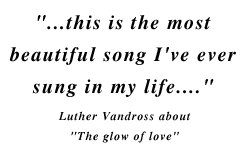 The
hit was Romani's first (disco) composition ever and with such
a start the hit making productions just got to continue. The
rest included well-appreciated songs like dreamy "Searching",
"The glow of love", that was Romani's second song
(co-written by Wayne Garfield) and energetic and Chic like
"It's a girls affair". Mauro Malavasi that was the
leading man besides Petrus was especially pleased with the
title track that he strengthened with some new arrangements
as he saw great potential in it. "Searching" almost
didn't make it for the record and Romani had to persuade Malavasi
the opposite. The track that was removed in favor of "Searching"
was in fact the later known hit "Starlette" by B.
B. & Q. band that found a place on their debut album.
Among all the tracks from the successful debut "The glow
of love" became one of the most popular, covered and
sampled dance songs with over 40 licensed versions to date.
In fact, "The Glow of Love" is the no 3 all-time greatest
dance/club hit recording, according to Billboard's 100th Anniversary
issue. In an interview for Vibe Magazine (September, 2001)
Wayne recalled Luther's recording session testimony as, "Wayne,
this is the most beautiful song I've ever sung in my life....".
The
hit was Romani's first (disco) composition ever and with such
a start the hit making productions just got to continue. The
rest included well-appreciated songs like dreamy "Searching",
"The glow of love", that was Romani's second song
(co-written by Wayne Garfield) and energetic and Chic like
"It's a girls affair". Mauro Malavasi that was the
leading man besides Petrus was especially pleased with the
title track that he strengthened with some new arrangements
as he saw great potential in it. "Searching" almost
didn't make it for the record and Romani had to persuade Malavasi
the opposite. The track that was removed in favor of "Searching"
was in fact the later known hit "Starlette" by B.
B. & Q. band that found a place on their debut album.
Among all the tracks from the successful debut "The glow
of love" became one of the most popular, covered and
sampled dance songs with over 40 licensed versions to date.
In fact, "The Glow of Love" is the no 3 all-time greatest
dance/club hit recording, according to Billboard's 100th Anniversary
issue. In an interview for Vibe Magazine (September, 2001)
Wayne recalled Luther's recording session testimony as, "Wayne,
this is the most beautiful song I've ever sung in my life....".
The
sound
The
material was much disco oriented with catchy melodies but
some of them showed a slightly unpleasant, somewhat cold feeling,
especially compared with later releases. In that respect Change'
first album had more in common with Chic's more aggressive
modern sound than any of the other releases. Vandross impressive
voice did also receive great attention, according to a majority
of the musical press at the time, he was inevitable for a
solo career, an assumption that indeed was realized one year
later.
Criticism
could also be heard about Change as a "poor man's Chic".
Even though Romani himself admits that Chic's appealing and
sophisticated sound did have an impact and was a source for
inspiration Change developed its own sound, something that
became especially obvious on the second album. The sound was
characterized by a sleeker, more polished and balanced touch
with a less aggressive approach than the sound of Chic. Both
of them had strong melodies and nice arrangements but Change
brought that to an even higher plateau with an over all more
clever production by the Italian producers. Especially Malavasi's
and Gianolio's delicate classical background at the conservatory
of Bologna contributed to that and shined through more than
ones. The winning but short lived "Change sound"
could soon be heard on all Petrus' projects. The centerpiece
in all this was beyond any doubt Mauro Malavasi that in his
crucial role both as a writer, arranger, conductor and over
all producer of most of the Petrus' created bands is the essence
of the successful "Spaghetti disco" sound from Italy!
So to say that Change is a "poor man's Chic" is
a statements that's not only ignorant but stupid as well.
Petrus
and Malavasi had now made it; they had reached their goal
to create a very successful band like Change and the sunny
light of success was shining at their faces.
Miracles
- Music from heaven and their greatest achievement!
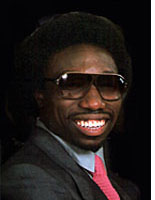 It
was a new year and Petrus, Malavasi, Romani, Gianolio and
the rest were in the studio planning their second album with
Change. Luther Vandoss had gained some rather impressive attention
after the debut album and Petrus, his producers and the fans
wanted more of him. Romani even wrote "Hold tight"
especially for him, but it wasn't meant to me. One of Petrus
main engineers Michael Brauer explains the reason why: "The
second Change album was suppose to be sung by Luther Vandross
but because Petrus refused to agree to a fair contract ---
Luther declined to sing on the record. They went on a search
to find someone that sounded like Luther. They finally found
a guy named Crabs that could copy the style but added little
originality". So no more Vandross that thereby left
the group for a successful solo career. He was, as Brauer
said, replaced by James "Crab" Robinson (above)
as lead vocalist that did have a great voice but was of
course no Vandross. Nonetheless Robinson's voice was both
smooth and powerful. Robinson, a cousin of Paris Ford from
B. B. & Q. band's debut album, had earlier been a vocalist
and played guitar on Sonny Liston Smith's jazz albums in 1979
and 1980 before joining Change. Furthermore Diva Gray replaced
Jocelyn Shaw. Even though Vandross and Shaw stepped down from
the main roaster they continued to sing and was s credited
as background vocalists on "Miracles". That was
especially strange when it comes to Vandross as he already
had declined Petrus unfair offer to continue as lead vocalist.
So why perform as a background vocalist? He even participated
in the same role on B. B. & Q. band's great debut album
that same year. The question however remains unanswered.
It
was a new year and Petrus, Malavasi, Romani, Gianolio and
the rest were in the studio planning their second album with
Change. Luther Vandoss had gained some rather impressive attention
after the debut album and Petrus, his producers and the fans
wanted more of him. Romani even wrote "Hold tight"
especially for him, but it wasn't meant to me. One of Petrus
main engineers Michael Brauer explains the reason why: "The
second Change album was suppose to be sung by Luther Vandross
but because Petrus refused to agree to a fair contract ---
Luther declined to sing on the record. They went on a search
to find someone that sounded like Luther. They finally found
a guy named Crabs that could copy the style but added little
originality". So no more Vandross that thereby left
the group for a successful solo career. He was, as Brauer
said, replaced by James "Crab" Robinson (above)
as lead vocalist that did have a great voice but was of
course no Vandross. Nonetheless Robinson's voice was both
smooth and powerful. Robinson, a cousin of Paris Ford from
B. B. & Q. band's debut album, had earlier been a vocalist
and played guitar on Sonny Liston Smith's jazz albums in 1979
and 1980 before joining Change. Furthermore Diva Gray replaced
Jocelyn Shaw. Even though Vandross and Shaw stepped down from
the main roaster they continued to sing and was s credited
as background vocalists on "Miracles". That was
especially strange when it comes to Vandross as he already
had declined Petrus unfair offer to continue as lead vocalist.
So why perform as a background vocalist? He even participated
in the same role on B. B. & Q. band's great debut album
that same year. The question however remains unanswered.
Change
released their second album "Miracles" in 1981 that also reached
the no 1 spot of Billboard's "Black music" albums
and hold that for six weeks. That was a fantastic achievement
but not a surprise as it was, and still is, a pure masterpiece
of music!
The
mastermind Italians - The real creators of Miracles!
Who
were the creators of this great music? The three main sources
to this immense success was the brilliant Italians of Davide
Romani, that wrote three tracks, and Mauro Malavasi and Paolo
Gianolio that wrote two each. Their obvious great love to
what they enjoyed most was so powerful that their hearts literally
could be seen in an inner world when the listener closed their
eyes. It's like a journey between this world and an eternal
paradise that they effortlessly travels back and forth between
getting divine inspiration to, at the end, generously give
the listener an experience of their life and everybody got
a free ticket!
|
|
|
|
|
|
Davide
Romani 
|
Mauro
Malavasi 
|
Paolo
Gianolio 
|
|
|
The
spiritual moments is unmistakably obvious and equally an immense
force that brings the release to pure musical quality. In
fact, a more brilliant effort with such a heavenly feeling
is very hard to find in this category of music. The music
simply affects your body, inner consciousness, your spirit
and foremost your heart in such a way that it's impossible
to resist. This production is the highlight of all the efforts
among the inner circle of the Italians.
To
pick any major hits from the album is impossible but commercially
"Paradise", with its playful guitars was a major song. The
song got a rather impressive background story too. Romani
thought that the set didn't have a strong single and in only
one night he wrote "Paradise"; indeed a remarkable
effort! The record also included the catchy "Hold tight" that
was the second single, the spiritual "Miracles",
speedy "On top". James Robinson's well articulated and sensitive
interpretation on "Your move" and the fantastic,
highly sensitive and spiritual "Heaven of my life"
makes you feel that you were in paradise and wont leave anybody
untouched in their spirit. That track is just a perfect combination
that brings the result to the highest level of musical art.
The track list ends up with "Stop for love", Malavasi'
first ballad and once again performed by Robinson in such
away that it leaves no one untouched. "Hold tight"
deserves a few more words. The excellent produced piece just
got to be heard with its sensitive, smooth, dance oriented
melody right through the song, an addictive refrain and all
put together with encouraging and uplifting lyrics performed
by Diva Gray in a masterful way.
One
thing that was so unmistakably clear about this album was
the fact that all the melodies were so amazingly strong and
hard to resist. These facts weren't created by chance though.
It was something that Romani and Malavasi were well aware
of. According to a statement by Petrus in 1981 the secret
to the success was simply "too much melody".
He saw that as the number one hit factor and tried to use
that recipe over and over again and both Malavasi, Romani
supported these ideals completely. Change and B. B. &
Q. band certainly lived up to that statement!
The
album became Change's best and most well balanced release.
It showed a distinct and mature musical expression that surpassed
their debut and in fact all the following albums as well,
even among all the Goody music/Little Maco productions. The
flawless production must have been a golden stone given by
the treasury of the music in heaven. If there are any album
with Change a new listener might choose, this is the one and
you wont get disappointed.
After
the successful first albums many great musicians came to the
studio and one of the most memorable and highly appreciated
visits for Romani was when no one less than Nile Rodgers dropped
in during a day of hard work preparing "Miracles".
Change
turns to R&B
Change
had reached the famous top of success
and it was now time for the important third album, the hardest
they say.
Change
had so far not been a band in the real meaning of the word,
they were more a studio concept with several different "Change"
touring in 80 and 81. Petrus realized after the success with
the albums in 80 and 81 that Change must become more band
like and that he had to finally give them a face and a stable
identity. Former keyboradplayer Jeff Bova express this in
a very clear way:
"Album
was recorded with all the studio players. When it came time
to promote it, Petrus had to put the actual touring band together
to make it a real promotable entity. If I recall they did
some gigs with the original lineup but it didn't work out
for the long run. Between 81 and 82 they tried some live support
of the record, recorded the 2nd album, organized the official
touring group and members, then released it and the basic
change that you know was unleashed upon the world! To make
the band more group like was what promoters, booking agents
(Norby Walters was ours) needed to get people to feel a connection
to the band".
Sharing
your love
The
lineup of Change in 82 included James Robinson, lead vocals,
Deborah Cooper, lead vocals, Timmy Allen (came from the band
Kinky fox where he played bass), bass, Mike Campell, guitar,
Vince Henry, sax & guitar, Jeff Bova, keyboards and Rick Gallwey,
Percussion. Some of them had also participated on the tour
after the 81 releases. Timmy Allen that originally came from
Philly became an important figure, both now and even more
later on. He had a great deal of influence over Petrus and
was influential in shaping the touring band for Change and
BB&Q band and played a later important role in the song selection
process on a number of album projects for Little Macho Music.
This lineup was almost entirely stable until their last album
in 85
In
82 the new album "Sharing your love" hit the market
with the dreamy dance
hit "The very best in you"
that reached the #16 spot on Billboard's Black Singles list.
The album also had other highlights with tracks like "Hard
times (it's gonna be all right)" with some fat guitar
riffs and haunting horn pumping and street funky
"Take you to heaven". The set also included some
nice ballads that gained some urban contemporary airplay.
A
new thing with this album was also the picture of the group
that compared to the two albums before had not been showing
anything except the cubist art of Frank Porto. The band ws
now more stable with a lineup that basically would be the
same until the last album and only go through some minor changes.
On a whole Change
maintained much of the flow from the the album in 81
even though the material didn't have the high-end quality
all through. Otherwise it was the fact that the band turned
more to R&B than (post-)disco that was of any musical
importance.
With three successful albums the fourth album "This is
your time" in 83 became no major
exception even though it didn't quite reach the same commercial
success. The lineup was slightly changed. Toby Johnson on
drums was added to the lineup and Rick Gallwey replaced Rick
Brennan as percussionist. The album open up with the mid-tempo
track "Got to get up" with lots of guitars and a
deep groove; tasty. The second
track "This is your time" is faster, still with
the deep guitars (groove!) all over, a landmark for this album
with out a doubt. The firsts side ends with a couple decent
tracks. When you turn to the other side "Stay' fit",
a decent track once again meets you followed by maybe the
best track together with "This is your time" on
this album "Tell me why". These two tracks were
similar in speed and feeling, both great dance classics. The
last track "Don't wait another night" is a playful
but ordinary track but still one of the best on the album.
The process seen on the last album towards R&B continued
with a deeper groove but also with less fluency and a feeling
of atmosphere than before. Evan so the tracks were musically
great for a rendezvous on the dancefloor or for a fully acceptable
Change-night at home.
An
new but short era
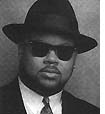 After
financial problems and the following departure of the two
leading characters of Malavasi and Romani in 83 caused by
that the future of Change, and every other of Petrus' projects,
looked uncertain. Who could possibly replace them as the leading
creators of the music? Petrus did however not hesitate a moment
before taking action, and what a perfect move it was. Petrus
hired the upcoming ex Time members, producers, songwriters
and musicians, James Harris III and Terry Lewis, more known
as Jimmy Jam and Terry Lewis. The pair wrote most of the tracks
and produced the entire album. Timmy Allen, that slowly had
developed within the Petrus empire, showed his writing skills
on the rest of the tracks with a very good result. Allen,
that became a key figure not only in Change, had a great deal
of influence over Petrus shaping the touring band for Change
and BB&Q and taking care of much of the song selection on
a number of album projects for Little Macho Music. James Robinson
left the group as lead singer, a role to be overtaken by Timmy
Allen and Rick Brennan.
After
financial problems and the following departure of the two
leading characters of Malavasi and Romani in 83 caused by
that the future of Change, and every other of Petrus' projects,
looked uncertain. Who could possibly replace them as the leading
creators of the music? Petrus did however not hesitate a moment
before taking action, and what a perfect move it was. Petrus
hired the upcoming ex Time members, producers, songwriters
and musicians, James Harris III and Terry Lewis, more known
as Jimmy Jam and Terry Lewis. The pair wrote most of the tracks
and produced the entire album. Timmy Allen, that slowly had
developed within the Petrus empire, showed his writing skills
on the rest of the tracks with a very good result. Allen,
that became a key figure not only in Change, had a great deal
of influence over Petrus shaping the touring band for Change
and BB&Q and taking care of much of the song selection on
a number of album projects for Little Macho Music. James Robinson
left the group as lead singer, a role to be overtaken by Timmy
Allen and Rick Brennan.
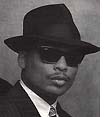 When
the release of the fifth album "Change of heart"
in the early parts of 84 came, it was a bomb. Featuring Porto's
perhaps most excellent and well-balanced cover art among all
their albums it was especially the first 12" included
version of the title track "Change of heart", with
an extremely catchy and irresistible melody with punchy guitars
and delicately added synthesizers that
became an all time classic. This track and the whole set for
that matter showed Jam's and Lewis' production skills at their
best together with Petrus deep knowledge for what was good
for the group over all. In fact, Petrus only was the executive
producer letting Jam and Lewis be the producer, even though
Petrus always had the last word and therefore indirectly decided
over the sound. On a whole, this was and is a very complete
album, the best since 81.
When
the release of the fifth album "Change of heart"
in the early parts of 84 came, it was a bomb. Featuring Porto's
perhaps most excellent and well-balanced cover art among all
their albums it was especially the first 12" included
version of the title track "Change of heart", with
an extremely catchy and irresistible melody with punchy guitars
and delicately added synthesizers that
became an all time classic. This track and the whole set for
that matter showed Jam's and Lewis' production skills at their
best together with Petrus deep knowledge for what was good
for the group over all. In fact, Petrus only was the executive
producer letting Jam and Lewis be the producer, even though
Petrus always had the last word and therefore indirectly decided
over the sound. On a whole, this was and is a very complete
album, the best since 81.  The
process continued to R&B and away from the eurodisco just
before. The release showed much of that stuff with tight harmonies,
deep bass guitars and a more groove like music, much different
from Change in 80 and 81. Although this isn't the "old
Change" Jam and Lewis special sound fit perfectly. The
timing couldn't have been better. Except "Change of heart",
the whole album included fantastic songs like sing-a-long
"You are my melody", the more edgy and sexy "I
got my eyes on you", "Lovely lady" and the
hypnotic and "It burns me up" all with a spark of
the old Change in a modern way. Some fans of Change might
say that this was American R&B and have nothing to do
with the original Change, but you can only say that if your
not open for some change(s). This is without a doubt one of
the best albums in 84, a must have for any lover of R&B.
The
process continued to R&B and away from the eurodisco just
before. The release showed much of that stuff with tight harmonies,
deep bass guitars and a more groove like music, much different
from Change in 80 and 81. Although this isn't the "old
Change" Jam and Lewis special sound fit perfectly. The
timing couldn't have been better. Except "Change of heart",
the whole album included fantastic songs like sing-a-long
"You are my melody", the more edgy and sexy "I
got my eyes on you", "Lovely lady" and the
hypnotic and "It burns me up" all with a spark of
the old Change in a modern way. Some fans of Change might
say that this was American R&B and have nothing to do
with the original Change, but you can only say that if your
not open for some change(s). This is without a doubt one of
the best albums in 84, a must have for any lover of R&B.
The
last album - with old Change
The
success with Jam and Lewis was short and it only lasted for
one album. In 85 Petrus had to come up to something new once
again. The result became the album "Turn on your radio" that
was released on Atlantic records. With a rather boring front
cover (below left) instead of the mystical and beautiful cubist
art of Greg Porto - only the UK release did for some unknown
reason feature the typical Porto style art (below right) -
on the earlier ones it became their weakest effort but not
without shiny glances of the old Change. Both Jeff Bova and
Toby Johnson had also left Change after their successful album
in 84 but Romani came back to write one track. A funny thing
was that Petrus co-wrote the hit "Let's go together", a thing
he seldom did. The album was foremost a production of formidable
Timmy Allen (below) however. Allen wrote six tracks and was
immensely inspired by the Jam/Lewis sound that he tried to
reuse and had already proven his talent on three tracks in
84 including the excellent "It burns me up". To
a certain degree he managed to copy the sound in 85 as well,
especially on the brilliant ballad "You'll always be a part
of me" that had very much in common with the Jam/Lewis monster
hit "Weekend girl" by SOS band the year before. Allen was
also the co-producer according to the album cover. In reality
the album was his project and an opening for a successful
career as producer. Even though Allen tried to stick with
the old sound of Change the influences from the modern and
empty plastic pop of the mid 80s couldn't be stopped entirely.
|
|
|
|
Cover
EU & US (Type 1)
|
Cover
UK (Type 2)
|
Compared
with the twin album of Peter Jacques band's (PJB) the same
year Change had more of that old groove oriented feeling left
and showed a much more solid album than PJB did as well. Despite
that, PJB's album did get slightly more media attention than
"Turn on your radio" that once again indicates the
strange musical world at the time. Even though Change's album
was solid they couldn't quit compete with the best Little
macho production that, the very appealing "Genie" album with
B. B. & Q. band. As songwriters Petrus used Allen, Cooper
and reused the old songwriter Paul Slade, that co-wrote so
many great hits on B. B. & Q. bands first album, to bring
some extra light to the project.
When
the title track starts playing it's a happy and nice melody
you hear but without that Change groove and glow from the
past. One has to say though that all the tracks pending from
good to descent dance tracks with a happy, easylisteing and
welcoming sound. Three tracks however rise them self above
the rest. The first of them, the thumping and happy "Let's
go together" was strangely the same track as Peter Jacques
band's "All right let's go" that year. Obviously the absence
of good tracks made Petrus include Romani's track on both
albums. The already mentioned marvelous ballad "You'll always
be a part of me" was the second of the stronger acts from
the set. The last of them was "Mutual attraction". Strictly
commercially speaking the first and the last tracks together
with "Oh what a feeling" became minor hits, especially in
Great Britain.
Even though the album was a bit over average in quality with
some highlights the fans must have been a bit disappointed
nonetheless. Maybe the split from Malavasi was much more devastating
than Petrus really understood in addition with the huge revolution
going on within the music industry that not longer demanded
the old disco groove oriented tracks any longer but more the
pop/rock/synth ones. Said that, "Turn on your radio" still
includes so much excellent musicians and singers filled with
so much love, experience and joy to the music. It's just sad
that the public couldn't quite comprehend that in 1985. Change
really couldn't coop with these demands from the musical industry.
They had a crush on their old sound that they couldn't let
go of. That reason made them successful but laid also the
ground for their end. PJB's similar album with far less impressive
track material that instead was given to Change was even controlled
by the pop and Synth music. Their music became also closer
to a real failure that all Petrus productions that year.
Although
the rather down going end of Change they still stands as one
of the best groups ever in their time. In my mind, their second
release is their most interesting and fulfilled effort together
with the Jam and Lewis produced 84 album. But on the other
hand, their single best track is to be found on their classic
debut with the endless, tasty and flying rhythms of "A lovers
holiday".
The
return of Change
Even
though the original Change disappeared after 1985 Davide Romani,
Mike Francis, a.k.a. Francesco Puccioni (1961-2009), and Patrick
Boothe worked on a new secret album in 1990. This new Change
project was at first called X-Change and planned to be released
on BMG North America under that name in 1992. But due to some
reason nothing from that album ever saw the day except the
single "The way you want me" on the same label in
1993. Years later in 2009 Romani got a deal with Fonte records
in Italy and could finally release the album late that same
year.
The
album includes tracks written and produced by Romani, Francis
and Boothe and was arranged and conducted by Romani that also
produced it in conjunction with Francis. The album is a slick
production with a typical early 90s R&B flavor but has
little to do with the original Change. It certainly got some
high moments with a few quite appealing tracks but it is Patrick
Boothe's touching voice that really gives the album the momentum
to elevate itself over average.
In
2018 Change released the album "Love 4 love" including
the infectious "Make me (go crazy). Lead vocals is performed
by Tanya Michelle Smith with Romani and Colombo as writers
of the material as well as producers.
Change
after Change
After
the end of the group, the members vanished to all kind of
musical projects.
Timmy
Allen (1982-1985, bass guitar, keyboard, lead vocals,
background vocals and co-producer). This multi talented
force had bit by bit grown as musician and songwriter
during his years with Petrus. Already early on Allen had a
great deal of influence over Petrus shaping the touring band
for Change and BB&Q. He continued that development taking
care of much of the song selection on a number of album projects
for Little Macho Music. From 1984 Petrus even gave Allen the
opportunity to write for Change showing high quality tracks
like funky "It burns me up" in 1984 and poplike
"Mutual attraction" in 1985. During the last years
of Petrus' empire between 1984 and 1986 Allen also received
recognition outside the Little Macho Music sphere as (co-)writer
and (co-)producer of tracks for artists like Lillo Thomas
(You're love's got a hold in 1984 and Sexy girl in 1986) and
Millie Jackson (Hot! Wild! Unrestricted! crazy love! in 1984)
and many more. Although they were all very well written and
catchy melodies the commercial success was unfortunately minor
except the #1 R&B hit "(You're puttin') a rush on
me" by Stephanie Mills in 1984 that he wrote and co-produced
in conjunction with writing partner Paul Laurence. Allen was
very influenced by the sound of Jam/Lewis a fact that is clearly
heard on the last Change album and on Lillo Thomas' early
albums. Today Allen works with such famous acts like Britney
Spears and Backstreet boys.
Deborah
Cooper (1982-1985, lead vocals) did some background
vocals on Jonathan Butler's album in 88 but has also appeared
on several award winning #1 hits for C+C Music Factory, Victor
Calderone, Peter Rauhofer and Tony Moran to name a few. In
addition to her live appearances with Jessica Simpson, Mariah
Carey, and others; she is a highly regarded jingle singer
for American Express and more. Check out her My space site
here
James
Robinson (1981-1983, lead vocals and guitar). This
smooth but still powerfull voice appeared after Change on
Jeff Lorber's album "Step by step" in 85 and released
a mediocre solo album in 87 titled "Guilty" on which the former
guitarist of Change and B. B. & Q. band's albums in 81
Abdul Wali Mohammed participated. Even though the album was
lacking of good melodies it did include the tasty mid-tempo
track "You're the one I've been dreaming of". A
couple of years later Robinson also worked on Bob Balwin's
album in 90 as vocalist.
Mike
Cambell (1982-1985, guitar) has been very well
used by multiple artists. He played guitar on B. B. &
Q. bands album "Genie" in 85, Freddie Jackson's albums 86-90,
former B. B. & Q. band background vocalist and former
Network member Johnny Kemp's debut album in 86, Billy Ocean's
album in 88, Atlantic starr's album the same year and on team
mate Vince Henry's solo album in 90 to mention just some of
them.
Vince
Henry (1982-1985, saxophone and guitar) did play
some outstanding saxophone play on Tawatha's debut album "Welcome
to my dream" in 87, Tashan's album in 89, former B. B.
& Q. band background vocalist and former Network member
Johnny Kemp's debut album in 86, Kashif's album in 87 and
much more. He released his own album in 90 titled "Vincent".
His most recent project is Jean-Paul Bourelly's album from
2002 where he plays sax.
Jeff
Bova (1982-1984, keyboards) also continued his
work as a great keyboardist and can be found on almost every
album cover. Bova toured with Herbie Hancock's Rockit Band
and worked as a session player with Nona Hendrix (La Belle),
Donna Allen, Starpoint, Cyndi Lauper, Robert Palmer, Tina
Turner, Cher, Eric Clapton, Meat Loaf, Celine Dion and many
others. He won a Grammy award in 1997 for "Album of the year"
as a producer of Celine Dions "Falling into You". (check out the interview with
Bova).
Rick
Gallwey (1982, percussion) played percussion on
former B. B. & Q. band background vocalist and former
Network member Johnny Kemp's debut album in 86, Sharon Bryant's
album in 89 and Pieces of a dream's album in 93 and others.
Rick
Brennan (1983-1985, percussion) only known musical
work is when he participated as background vocalist on Takeshi
Itoh's album in 91.
Toby
Johnson (1983-1984, drums) which later career is
unknown.
Among
all members of Change most of them continued as studio musicians
and were very well used as they played or sang on numerous
of well-known artists. James Robinson and Vince Henry did
release own albums even though they didn't make any noticeable
footsteps in the sand of music, at least not commercially.
But the continued with the things the appreciate most, the
music!
Timmy
Allen and Jeff Bova however reached that highest level when
it comes to fame and success as musicians, songwriters and
producers in the much more commercialized 90's. In Bova's
case mainly as a songwriter and keyboardist and in Allen's
as a producer and songwriter. Timmy's work as a producer of
Britney Spears and Backstreet boys was no musical improvement
compared to Change and just a boring, mass produced rhythm
mix that most readers here can live without.
Bova
may had reached a higher musical level, but even so, both
of them reached an impressive commercial achievement. Once
again, when it comes to Allen his choice of mass produced
main stream productions and writing jobs, especially during
the 90's, was just a natural sign of the time. Still it's
a bit sad for such a talented man. But on the other hand,
the man got to live, so, no blame on Allen for sure! We just
take our hats off and salute him for his outstanding achievements
together with Change and B. B. & Q. band!
Compilations
Of
course someone would sooner or later try to do a compilation
of the best tracks of Change after their departure in 85.
Until this day four compilations have been released. The first
came in fact already in 84, before their last album, on the
small Italian Five record company from Milan. They simply
called the release "Greatest hits". It featured
only eight tracks, including four from the first album, but
was nonetheless a good selection.
In
89 a second try was made by the equally small Dutch label
Friends records. They earned more substantial recognition
than the Italian one and became the first major compilation
of Change. They called the set "Collection" and
featured eleven tracks. This was a competent record with a
fine choice of tracks even though they emphasized way to much
on Change's albums in 80 and 84. The "Collection"
was happily released both on LP and CD.
Eight
years later in 97 the French Flare records tried with another
compilation, but didn't reach any success or recognition however,
probably because it was released in too limited numbers.
|
|
|
|
|
|
|
|
Greatest
hits
1984
|
Collection
1989
|
The
very best of 1998
|
The
best of
2003
|
|
|
The
most commercially and musically
successful achievement came just one year later on the 30th
of June 1998 when Rhino records released the perfect "The
very best of Change". This compilation has a well-balanced
mix of tracks from all 5 albums and is tastefully mixed with
a superb music quality. The only downside is that all the
tracks taken from the debut album are shorter in length compared
with the original album. It seems that the 7" single
versions have been used. The rest of the material however
have the same length as the original albums.
The
latest reissue called "The best of Change", compiled
in Italy, printed in Germany and distributed by Warner Music
Group, was released on the 23rd of December 2003. It contains
a brilliant mix of 28 track on two CD's covering all five
albums is the most complete compilation until this day, but
not without mistakes.
Even though all tracks are full album versions non
of the excellent Jam/Lewis produced 1984 album exists on this
compilation!
Both
of the two last compilations are, even thought they are not
flawless, perfect and highly recommended if you don't know
the band and would like to learn more about them without buying
their entire stock of their albums.
Several
test pressings are also available of which one, Change Megmix
(test pressing 4) from 1981 can be downloaded here
Reissues
There
have also been several reissues of the albums by Change.
The
earliest came on the 1st of September 1992 when RFC/Warner
bros released a US printed CD
of the classic debut of Change.
Between
2000 and 2001 the second reissue was made on the Japanese
East west records (distributed by WEA international) that
dropped four of the six albums on CD containing the 80,
81, 82 and 84 releases. As they were imported the were very
expensive though (around 40$) and few people could afford
them all. Despite the high price the sound quality was superb!
On
the 19th of November 2002 the unknown Spy records dropped
their "2 classic albums on 1 CD!" containing both
the outstanding "Miracles" and "Change of
heart" albums.
On
the 15th of November 2005 the Italian label Fonte records
released "The glow of love", "Miracles", "Sharing your
love", "This is your time" and "Turn on your radio"
on CD in a box. More info about this box and the additional
four exclusive boxes in the series can be found here
In
January 2007 the small English label Blue bird records released
"Turn on your radio" on CD.
In
September 2007 Fonte records released the 2 CD compilation
"Change - The final collection" featuring 28 tracks
from all albums in a beautifully and classy Frank Porto
inspired cover design.
In
late 2009 Fonte records released the 2 CD compilation Change
- Greatest hits & essential tracks.
If
you got any new knowledge or anything else to add about
this material, please feel free to send a mail to www.jacquespetrus.com
by using the the e-mail address at the bottom of this page.
Discography
of Change
Please click on the covers below to see a complete list of
songs from each record.
|
Album
cover
(if available)
|
Title,
year & format
(if
available)
|
|
|
|
|
1980
(LP & CD)
|
|
|
|

|
1981
(LP & CD)
|
|
|
|
|
1982
(LP & CD)
|
|
|
|

|
1983
(LP & CD)
|
|
|
|
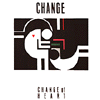
|
|
|
|
|
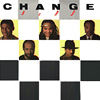
|
|
|
|
|

|
|
|
|
|

|
|
|
All original release years
|
|
 Copyright
© 1999-2025
Copyright
© 1999-2025
 A
special thanks to Paolo Caroselli
A
special thanks to Paolo Caroselli
|